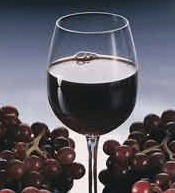How pH Influences Wine
 Wine’s chemical and biological stability depend on pH value. pH values range from 2.9 to 4.2 in wine, as measured by pH meters. Lower pH values are known to improve stability, so winemakers usually prefer a pH range of 3.0 to 3.5.
Wine’s chemical and biological stability depend on pH value. pH values range from 2.9 to 4.2 in wine, as measured by pH meters. Lower pH values are known to improve stability, so winemakers usually prefer a pH range of 3.0 to 3.5.
Wine pH depends on:
- Total amount of acid present
- Ratio of malic acid to tartaric acid
- Amount of potassium present
High ph Wine Values
Wines containing little acid and excessive potassium reveal high pH values. With high pH values in wine, bacteria grow rapidly and undesirable bacterial fermentation becomes more of an issue. This creates less biological and chemical stability. The color is also poor. Wines with a high pH need more attention.
Low pH Wine Values
When wine has lower pH values, it has more tartaric acid but less malic acid and less potassium. Low pH inhibits bacteria and causes sugar fermentation to progress more evenly. It also makes malolactic fermentation easier to control.
Low wine pH offers better visual qualities as well—both red and white wines have richer color intensity. Red wines contain more color and white wines do not brown as easily.
Measuring pH
To measure pH levels in wine, use a pH meter with up to 3-point pH calibration or a handheld meter with 5-point pH calibration for accuracy and reliability.
Comentarios
Publicar un comentario